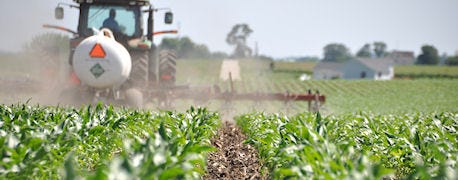June 7, 2013

By George Silva, Michigan State University Extension
The PSNT is an excellent tool to determine the available nitrogen (N) from the soil in special situations. It enables farmers to reduce their N fertilizer rates without risking yields. However, identifying the right fields based on the field's history is critical to the success of the PSNT.
Pre-sidedress soil nitrate test for corn was developed by Fred Magdoff in Vermont in 1984. Despite its long history, there are still some misconceptions about the test.

Target Fields With High N Mineralization Potential For Pre-Sidedress Soil Nitrate Test
Some points to remember
In Michigan, the test needs to be conducted on fields with high N mineralization potential, for example, fields having a history of manure or forage legumes such as alfalfa. The PSNT was developed for these kinds of situations. It is an index of N mineralization potential and its best use is to identify corn fields that will not respond to N fertilizer. Michigan State University Extension recommends that fields having repeated applications of livestock manure or biosolids or recent forage legume crops as good choices for PSNT. Fields that do not have this background will not show sufficient N credit to justify the time and cost of doing the test.
Once the fields are selected, no broadcast or incorporated pre-plant or at plant N fertilizer should be applied. A modest amount of starter N up to 40 pounds per acre could be band-applied near the seed. This band-applied N should not interfere with the soil samples that are taken right between the rows. If N fertilizers were broadcast before the test, the PSNT soil samples will reveal hot spots and the test results will not be reliable.
Growers should be prepared to take soil samples when the corn is about 8 to 12 inches tall. This will provide enough time to get the test results and equipment ready for sidedressing N. This timing will coincide with the time of rapid N uptake by corn.
This test should not be used to determine the residual nitrate N in the soil under situations where large amounts of N fertilizer were applied prior to or at planting and most of this N was lost due to early season leaching or denitrification.
Look for a follow-up article on the actual sampling procedure for PSNT published at MSU Extension News for Field Crops.
For more information, visit online. To contact an expert in your area, visit here, or call 888-MSUE4MI (888-678-3464).
You May Also Like




